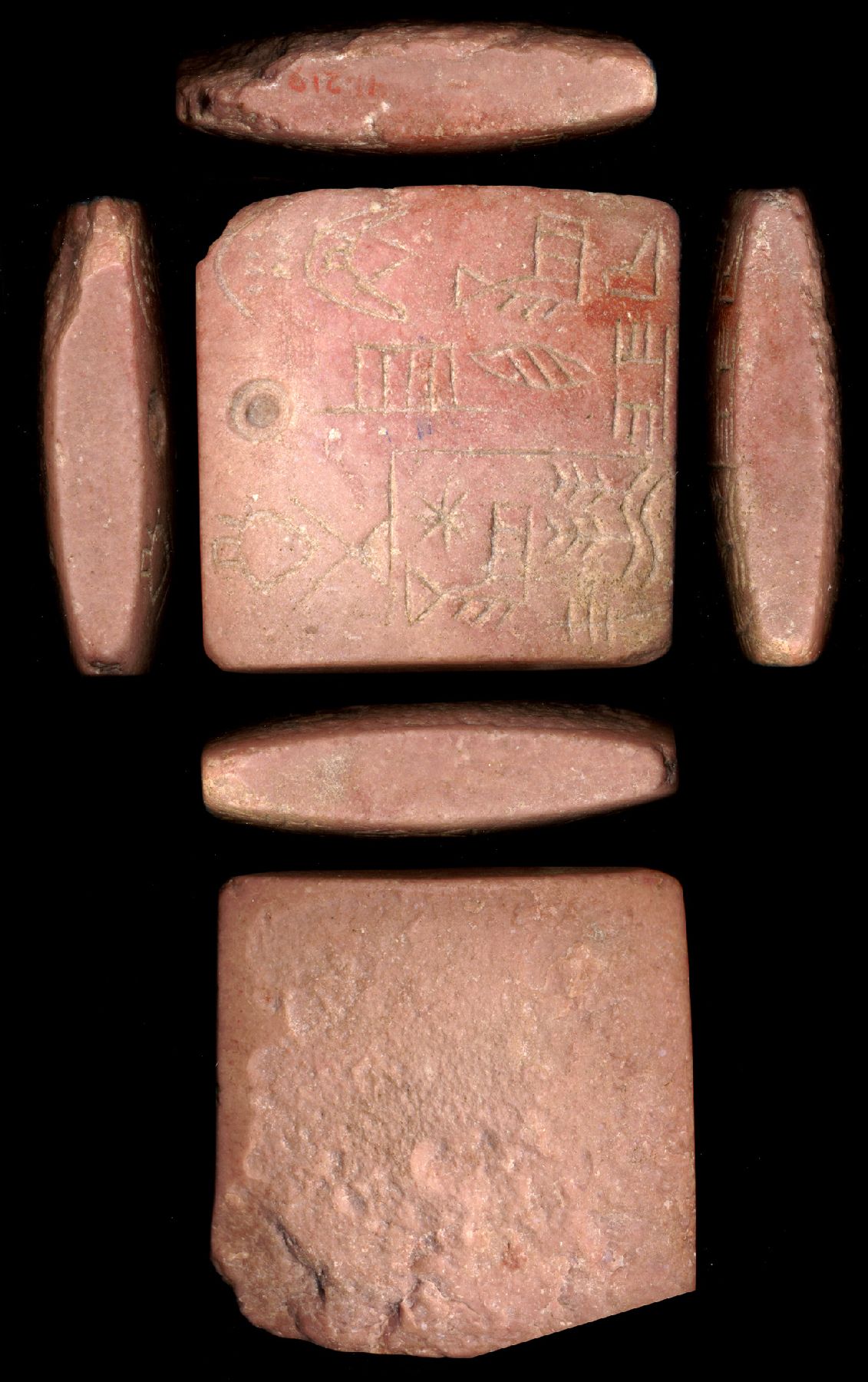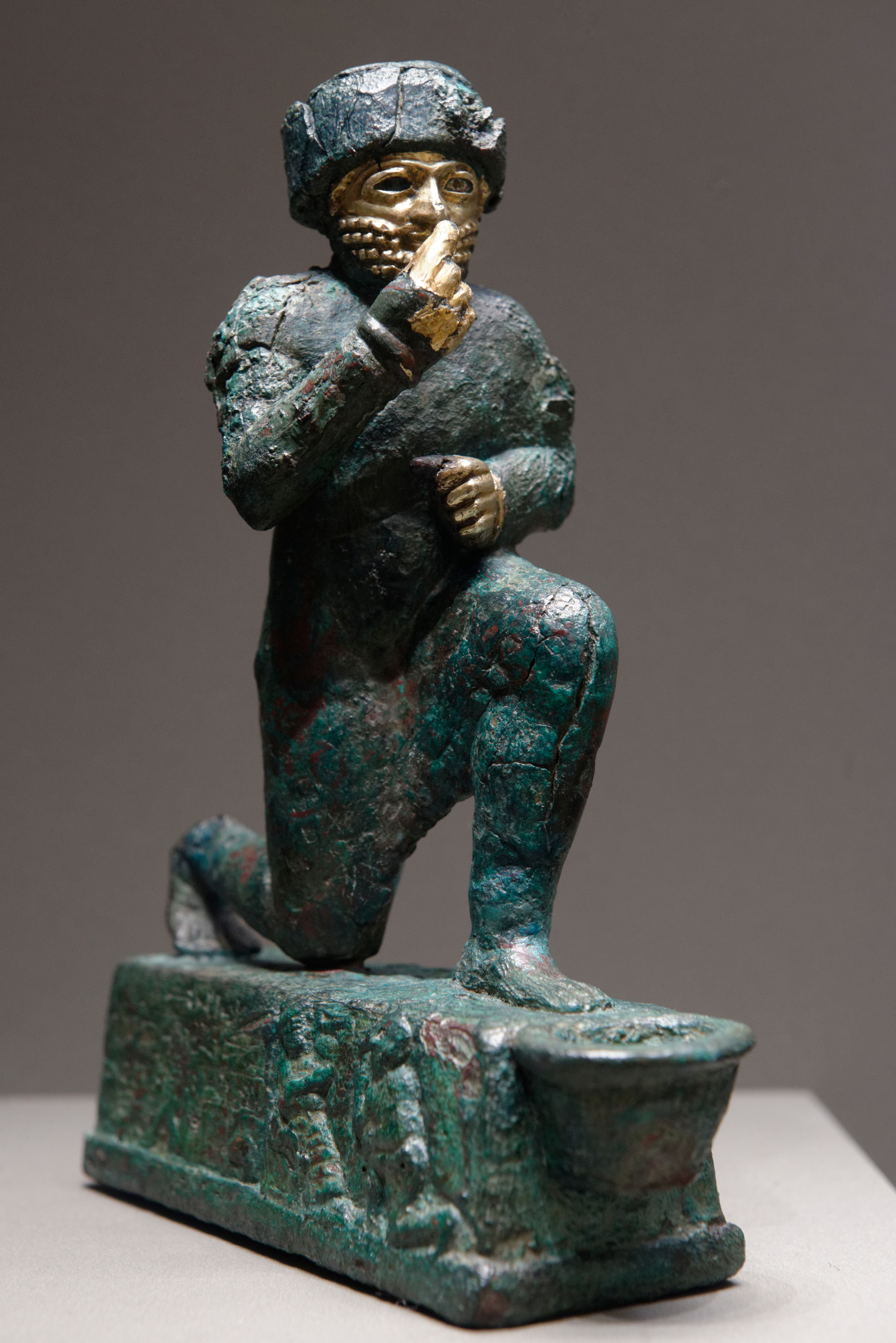|
Der (Sumer)
Der (Sumerian language, Sumerian: 𒌷𒂦𒀭𒆠 ''uruBAD3.ANki''; Akkadian language, Akkadian: 𒌷𒂦𒀭𒆠 ''uruBAD3.ANki'' or ''urude-e-ru(ki)'') was a Sumerian city-state at the site of modern Tell Aqar near Badra, Iraq, al-Badra in Iraq's Wasit Governorate. It was east of the Tigris River on the border between Sumer and Elam. At one time it was thought that it might have been ancient Durum (Sumerian language, Sumerian: ''uruBAD3ki'') but more recent scholarship has rebutted that. The principal god of Der was Ištaran. In the 1st millennium BC, he was also referred to as ''Anu rabû'' ("''Great Anu''") in Akkadian. The name of his temple at Der was Edimgalkalama. History Early Bronze Der was occupied from the Early Dynastic Period (Mesopotamia), Early Dynastic period through Neo-Assyrian times. The local deity of the city was named Ishtaran, represented on Earth by his minister, the snake god Nirah. Ur III period In the late 3rd millennium, during the reign of Sulgi ... [...More Info...] [...Related Items...] OR: [Wikipedia] [Google] [Baidu] |
Sumerian Language
Sumerian ) was the language of ancient Sumer. It is one of the List of languages by first written account, oldest attested languages, dating back to at least 2900 BC. It is a local language isolate that was spoken in ancient Mesopotamia, in the area that is modern-day Iraq, Iraq. Akkadian language, Akkadian, a Semitic languages, Semitic language, gradually replaced Sumerian as the primary spoken language in the area (the exact date is debated), but Sumerian continued to be used as a sacred, ceremonial, literary, and scientific language in Akkadian-speaking Mesopotamian states, such as Assyria and Babylonia, until the 1st century AD. Thereafter, it seems to have fallen into obscurity until the 19th century, when Assyriologists began Decipherment, deciphering the cuneiform inscriptions and excavated tablets that had been left by its speakers. In spite of its extinction, Sumerian exerted a significant influence on the languages of the area. The Cuneiform, cuneiform script, original ... [...More Info...] [...Related Items...] OR: [Wikipedia] [Google] [Baidu] |
Shu-Sin
Shu-Sin, also Šu-Suen (: '' DŠu D Sîn'', after the Moon God Sîn", the "𒀭" being a silent honorific for "Divine", formerly read Gimil-Sin) (died c. 2028 BC) was king of Sumer and Akkad, and was the fourth king of the Ur III dynasty. He succeeded his father Amar-Sin, and reigned 2037–2028 BC (Middle Chronology). Reign Following an open revolt of his Amorite subjects, he directed the construction of a fortified wall between the Euphrates and the Tigris rivers in his fourth year, intending it to hold off any further Amorite attacks. He was succeeded by his son Ibbi-Sin. An erotic poem addressed to Shu-Sin by a female speaker is preserved in a cuneiform tablet called Istanbul 2461. The poem's speaker expresses her strong desires and longings for the king. An inscription states that he gave his daughter in marriage to the ruler of Šimānum "His daughter was given as a bride to Simanum. Simanum, Habura, and the surrounding districts rebelled against the king, they chased ... [...More Info...] [...Related Items...] OR: [Wikipedia] [Google] [Baidu] |
Assyria
Assyria (Neo-Assyrian cuneiform: , ''māt Aššur'') was a major ancient Mesopotamian civilization that existed as a city-state from the 21st century BC to the 14th century BC and eventually expanded into an empire from the 14th century BC to the 7th century BC. Spanning from the early Bronze Age to the late Iron Age, modern historians typically divide ancient Assyrian history into the Early Assyrian period, Early Assyrian ( 2600–2025 BC), Old Assyrian period, Old Assyrian ( 2025–1364 BC), Middle Assyrian Empire, Middle Assyrian ( 1363–912 BC), Neo-Assyrian Empire, Neo-Assyrian (911–609 BC), and Post-imperial Assyria, post-imperial (609 BC– AD 240) periods, based on political events and gradual changes in language. Assur, the first Assyrian capital, was founded 2600 BC, but there is no evidence that the city was independent until the collapse of the Third Dynasty of Ur, in the 21st century BC, when a line of independent kings starting with Puzur-Ashur I began rulin ... [...More Info...] [...Related Items...] OR: [Wikipedia] [Google] [Baidu] |
Marhasi
Marhaši ( Sumerian: ''Mar-ḫa-ši Ki'' , ''Marhashi'', ''Marhasi'', ''Parhasi'', ''Barhasi''; in earlier sources Waraḫše) was an important ancient Near East polity situated in the region near Elam. It is generally assumed, though not certain, that the Paraḫšum/Baraḫšum ( ''pa2-ra-ah-shum2-ki'') of the Akkadian Empire period referred to Marhaši. This equivalence has been challenged. It is known from 3rd millennium BC and early 2nd millennium BC Mesopotamian sources. Its precise location has not been identified but the current thinking places it on the eastern side of the Iranian plateau. The language of Marhaši is considered to be different from that of Simaški, and only minimally Elamite-related. Marhaši is known to have been the source of a number exotic trade goods for Mesopotamia including the "bear of Marhaši". Other trade goods were lapis lazuli and carnelian. One lexical list includes a mention of "Carnelian which is speckled with yellow, Marḫaši Carne ... [...More Info...] [...Related Items...] OR: [Wikipedia] [Google] [Baidu] |
Anshan (Persia)
Anshan (Elamite language, Elamite Elamite cuneiform, cuneiform: ; , ) modern Tall-e Malyan (), also Tall-i Malyan, was an Elamite and ancient Persian city. It was located in the Zagros Mountains in southwestern Iran, approximately north of Shiraz and west of Persepolis in the Beyza/Ramjerd plain, in the province of Fars province, Fars. It was one of the earliest urban states to exist, and one of the earliest capitals of Elam from the late 4th millennium BC. It fell under the rule of the Persians in the 7th century BC and then became one of the early capitals of Persis, Persia. Most of what is known about Anshan has been discovered through ancient artifacts discovered in archaeological digs at Tall-e Malyan and passages in early Mesopotamian and Elamite texts. History Anshan is considered to be the origin of one of the world's oldest known civilizations. It was occupied continuously from before 4000 BC to 1000 BC and was politically tied to the Elamites at Susa, as well ... [...More Info...] [...Related Items...] OR: [Wikipedia] [Google] [Baidu] |
Sealand Dynasty
The First Sealand dynasty (URU.KÙKIWhere ŠEŠ-ḪA of King List A and ŠEŠ-KÙ-KI of King List B are read as URU.KÙ.KI), or the 2nd Dynasty of Babylon (although it was independent of Amorite-ruled Babylon), very speculatively c. 1732–1460 BC (short chronology), is an enigmatic series of kings attested to primarily in laconic references in the ''King Lists A'' and ''B'', and as contemporaries recorded on the Assyrian ''Synchronistic king list A.117''. Initially it was named the "Dynasty of the Country of the Sea" with Sealand later becoming customary. The dynasty, which had broken free of the short lived, and by this time crumbling Old Babylonian Empire, was named for the province in the far south of Mesopotamia, a swampy region bereft of large settlements which gradually expanded southwards with the silting up of the mouths of the Tigris and Euphrates rivers (the region known as ''mat Kaldi'' " Chaldaea" in the Iron Age). Sealand pottery has been found at Girsu, Uruk, and La ... [...More Info...] [...Related Items...] OR: [Wikipedia] [Google] [Baidu] |
Babylon
Babylon ( ) was an ancient city located on the lower Euphrates river in southern Mesopotamia, within modern-day Hillah, Iraq, about south of modern-day Baghdad. Babylon functioned as the main cultural and political centre of the Akkadian-speaking region of Babylonia. Its rulers established two important empires in antiquity, the 19th–16th century BC Old Babylonian Empire, and the 7th–6th century BC Neo-Babylonian Empire. Babylon was also used as a regional capital of other empires, such as the Achaemenid Empire. Babylon was one of the most important urban centres of the ancient Near East, until its decline during the Hellenistic period. Nearby ancient sites are Kish, Borsippa, Dilbat, and Kutha. The earliest known mention of Babylon as a small town appears on a clay tablet from the reign of Shar-Kali-Sharri (2217–2193 BC), of the Akkadian Empire. Babylon was merely a religious and cultural centre at this point and neither an independent state nor a large city, s ... [...More Info...] [...Related Items...] OR: [Wikipedia] [Google] [Baidu] |
Ammi-Ditana
Ammi-Ditana was a king of Babylon who reigned from 1683–1640s BC. He was preceded by Abi-Eshuh. Year-names survive for the first 37 years of his reign, plus fragments for a few possible additional years. His reign was a largely peaceful one; he was primarily engaged in enriching and enlarging the temples, and a few other building projects, although in his 37th regnal year he recorded having destroyed the city wall of Der, built earlier by Damiq-ilishu of Isin. Literature Ammi ditana is known for his literature.One is called Ammi-ditāna's hymn to Ištar. Another work is called the Di 1353, a letter to chief lamentation priest of Annunītum on the provision of fodder barley for livestock in Nakkamtum. References 17th-century BC kings of Babylon First dynasty of Babylon {{AncientNearEast-bio-stub ... [...More Info...] [...Related Items...] OR: [Wikipedia] [Google] [Baidu] |
Larsa
Larsa (, read ''Larsamki''), also referred to as Larancha/Laranchon (Gk. Λαραγχων) by Berossus, Berossos and connected with the biblical Arioch, Ellasar, was an important city-state of ancient Sumer, the center of the Cult (religious practice), cult of the sun god Utu with his temple E-babbar. It lies some southeast of Uruk in Iraq's Dhi Qar Governorate, near the east bank of the Shatt-en-Nil canal at the site of the modern settlement Tell as-Senkereh or Sankarah. Larsa is thought to be the source of a number of tablets involving Babylonian mathematics, including the Plimpton 322 tablet that contains patterns of Pythagorean triples. History Larsa is found (as UD.UNUG) on Proto-cuneiform lexical lists from the Uruk 4 period (late 4th millennium BC). A few Proto-cuneiform tablets were also found there. Three Neolithic clay tokens, from a slightly early period, were also found at Larsa. For most of its history Larsa was primarily a cult site for the god Utu. In the early p ... [...More Info...] [...Related Items...] OR: [Wikipedia] [Google] [Baidu] |
Yamhad
Yamhad (Yamḫad) was an ancient Semitic languages, Semitic-speaking kingdom centered on Ḥalab (Aleppo) in Syria (region), Syria. The kingdom emerged at the end of the 19th century BC and was ruled by the Yamhad dynasty, who counted on both military and diplomacy to expand their realm. From the beginning of its establishment, the kingdom withstood the aggressions of its neighbors Mari, Syria, Mari, Qatna and the Old Assyrian Empire#Amorite Period in Assyria.2C 1809.E2.80.931750 BC, Old Assyrian Empire, and was turned into the most powerful Syrian kingdom of its era through the actions of its king Yarim-Lim I. By the middle of the 18th century BC, most of Syria minus the south came under the authority of Yamhad, either as a direct possession or through vassalage, and for nearly a century and a half, Yamhad dominated northern, northwestern and eastern Syria, and had influence over small kingdoms in Mesopotamia at the borders of Elam. The kingdom was eventually destroyed by the Hit ... [...More Info...] [...Related Items...] OR: [Wikipedia] [Google] [Baidu] |



